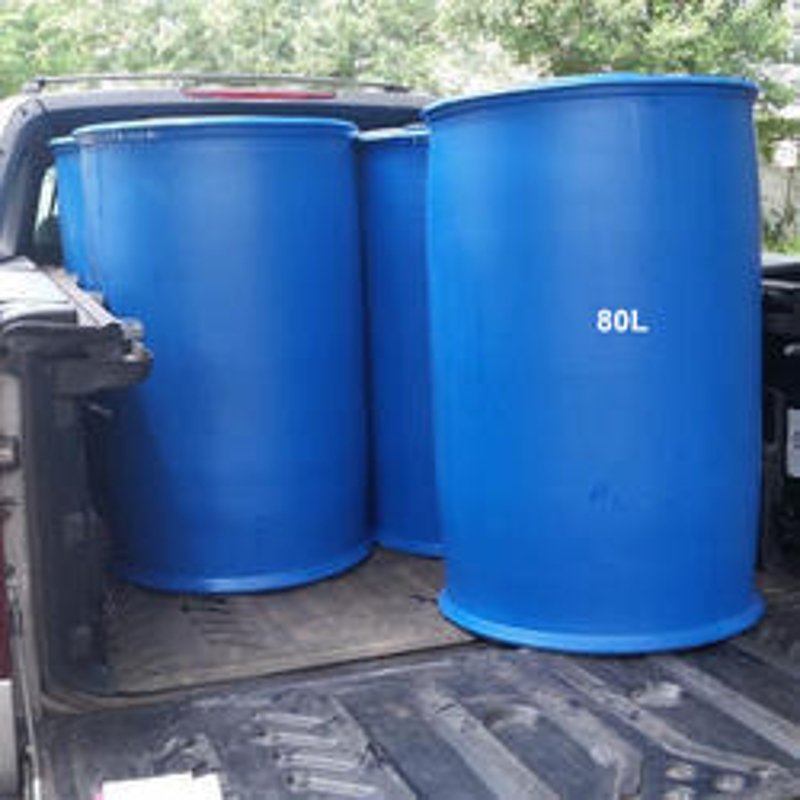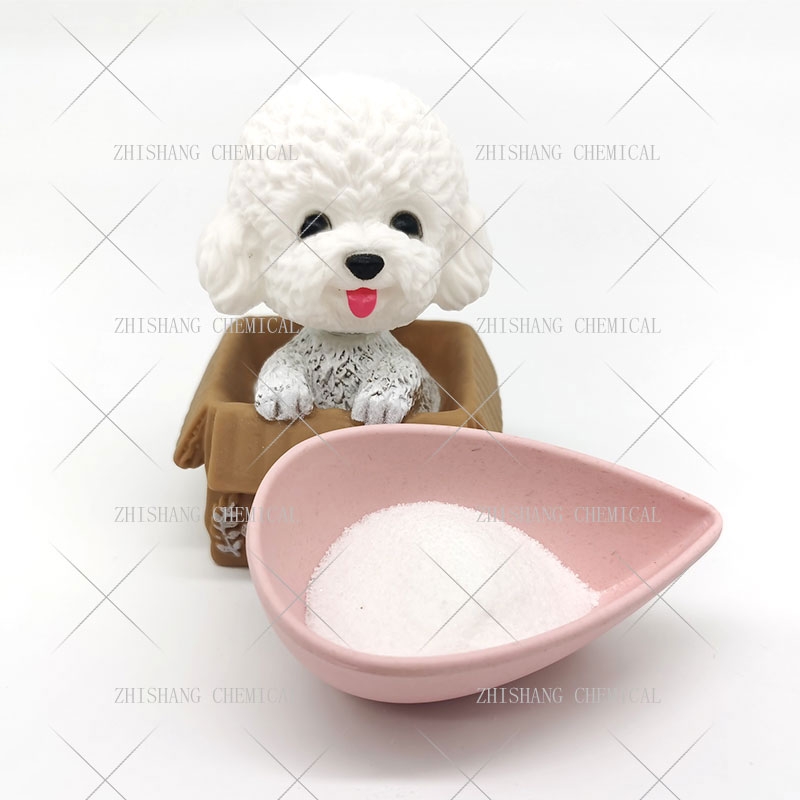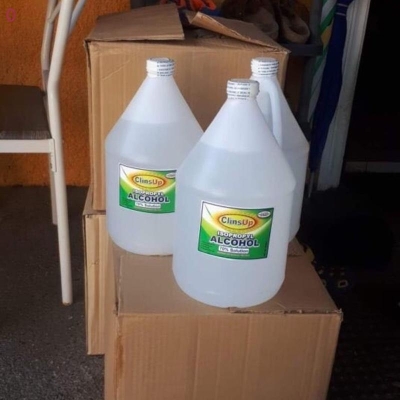-
Categories
-
Pharmaceutical Intermediates
-
Active Pharmaceutical Ingredients
-
Food Additives
- Industrial Coatings
- Agrochemicals
- Dyes and Pigments
- Surfactant
- Flavors and Fragrances
- Chemical Reagents
- Catalyst and Auxiliary
- Natural Products
- Inorganic Chemistry
-
Organic Chemistry
-
Biochemical Engineering
- Analytical Chemistry
-
Cosmetic Ingredient
- Water Treatment Chemical
-
Pharmaceutical Intermediates
Promotion
ECHEMI Mall
Wholesale
Weekly Price
Exhibition
News
-
Trade Service
In January ~ August, the economic operation of China's petroleum and chemical industry was generally stable and slowed down, and the trend was differentiated
.
The oil and gas extraction industry grew steadily, the chemical industry slowed down, and the refining industry declined
.
The growth rate of production and efficiency of the whole industry slowed down, and investment and import and export trade maintained rapid growth
.
Crude oil price volatility intensified, the chemical market fluctuated greatly, and prices fell; The market demand momentum is weak, and the current downward trend of economic operation has not been fundamentally reversed
.
According to statistics, in January ~ August, the industrial added value of enterprises above designated size in the petroleum and chemical industry decreased by 0.
1% (year-on-year, the same below); Operating income was 10.
8 trillion yuan, an increase of 19.
0%; Total profit was 907.
56 billion yuan, an increase of 10.
9%; The total import and export volume was 697.
36 billion US dollars, an increase of 28.
0%; China's total oil and gas output was 266 million tons (oil equivalent), an increase of 4.
3%; Crude oil processing volume was 435 million tons, down 6.
3%; Total production of major chemicals decreased by 0.
9%.
First, the added value of the whole industry has decreased slightly, and the operating income has maintained rapid growth
According to data from the National Bureau of Statistics, in the first eight months, there were 28,480 enterprises above designated size in the petroleum and chemical industry, and the cumulative growth rate of added value decreased by 0.
1%, which was 0.
1 percentage points
smaller than that in January ~ July.
Among them, the added value of the chemical industry increased by 3.
3%, accelerating by 1.
0 percentage points; the refining industry decreased by 7.
8%, narrowing by 0.
2 percentage points; and the oil and gas extraction industry increased by 4.
7%, accelerating by 0.
1 percentage points
.
Overall, the added value of the whole industry improved in the first eight months
.
Among them, the growth rate of the added value of the chemical industry rebounded slightly, the growth of the oil and gas extraction industry remained stable, and the decline of the refining industry narrowed
.
In January ~ August, the petroleum and chemical industry achieved an operating income of 10.
8 trillion yuan, an increase of 19.
0%, accounting for 12.
3%
of the national scale industrial operating income.
Among them, the operating income of the chemical industry was 6.
28 trillion yuan, an increase of 15.
6%; Refining revenue increased by 21.
0%; The operating income of oil and gas extraction industry was 970.
56 billion yuan, an increase of 40.
0%.
The data shows that after entering the third quarter, the industry's operating income continued to maintain rapid growth, but the growth rate slowed down
.
Second, the overall slowdown of industry efficiency, and the differentiation of sub-industries is obvious
In January ~ August, the profits of the petroleum and chemical industry continued to grow, but the growth rate slowed down
significantly.
Production costs increased and operating income margins declined
.
The benefits of sub-industries are clearly differentiated, the oil and gas extraction industry has the best benefits, the growth rate of chemical industry benefits has declined, and the efficiency of refining industry has continued to decline
.
Statistics show that in January ~ August, the total profit of the whole industry was 907.
56 billion yuan, an increase of 10.
9%, 5.
6 percentage points slower than that in January ~ July, accounting for 16.
4%
of the total profit of the national scale industry.
Among them, the total profit of the oil and gas extraction industry was 290.
97 billion yuan, a significant increase of 111.
1%; Total profit of refining fell by 54.
3%; The total profit of the chemical industry was 540.
67 billion yuan, an increase of 3.
0%, 4.
0 percentage points
lower than the previous July.
In the first 8 months, the profit margin of the whole industry's operating income was 8.
4%, down 4.
2 percentage points
from January ~ July.
Third, energy production is basically stable, and the output of major chemicals has declined
According to statistics, in January ~ August, the total output of crude oil and natural gas in the country was 266 million tons (oil equivalent), an increase of 4.
3%, down 0.
2 percentage points from January ~ July; the total output of major chemicals decreased by 0.
9%, and the increase in January ~ July was 1.
3%.
Oil and gas production was basically stable, and crude oil processing declined
.
In January ~ August, the national crude oil output was 137 million tons, an increase of 3.
2%, slowing down by 0.
5 percentage points from January ~ July; natural gas production was 143.
71 billion cubic meters, an increase of 5.
5%, up 0.
1 percentage points
.
Crude oil processing volume was 435 million tons, down 6.
3%; The output of refined oil products (gasoline, kerosene, diesel, the same below) was 231 million tons, an increase of 0.
6%.
Among them, diesel production was 115 million tons, an increase of 14.
3%; gasoline production was 97.
572 million tons, down 2.
9%; The output of kerosene was 18.
916 million tons, down 34.
8%.
Production of priority chemicals has slowed
.
In January ~ August, the national ethylene output was 18.
379 million tons, down 2.
3%; sulfuric acid output was 62.
806 million tons, down 0.
4%; the output of caustic soda was 26.
340 million tons, an increase of 1.
9%; The output of soda ash was 19.
082 million tons, down 2.
1%; The output of synthetic resin was 73.
780 million tons, an increase of 0.
6%; The output of synthetic fiber monomer (polymer) was 50.
152 million tons, down 8.
0%.
In addition, tire production decreased by 5.
6% to 564 million tires
.
Agrochemical production has slowed
.
In January ~ August, the total output of chemical fertilizers (purified) in the country was 36.
827 million tons, an increase of 0.
4%; The output of pesticide raw materials (100%) was 1.
686 million tons, down 1.
4%.
Fourth, market demand continues to shrink
In January ~ August, the domestic energy and major chemicals market demand contracted, and consumption was weak
.
Data show that the total apparent consumption of crude oil and natural gas was 681 million tons (oil equivalent), down 2.
3%, an increase of 0.
6 percentage points over the previous July; the growth rate of consumption of major chemicals fell by 2.
2%, a decrease of 0.
5 percentage points
.
Crude oil and natural gas consumption fell, and refined oil consumption increased and fell
.
In January ~ August, the apparent consumption of domestic crude oil was 466 million tons, down 2.
5%, an increase of 0.
8 percentage points from January ~ July, and the degree of external dependence was 70.
6%; The apparent consumption of natural gas was 238.
99 billion cubic meters, down 1.
9%, an increase of 0.
4 percentage points over the previous July, and the degree of external dependence was 39.
9%.
The apparent consumption of domestic refined oil was 216 million tons, an increase of 7.
8%, an increase of 1.
7 percentage points
lower than that in January ~ July.
Among them, the apparent consumption of diesel was 112 million tons, an increase of 30.
1%; The apparent consumption of gasoline was 90.
026 million tons, an increase of 0.
1%; The apparent consumption of kerosene was 14.
349 million tons, down 42.
0%.
The consumption of basic chemical raw materials continued to decline, and the decline in synthetic materials expanded
.
The data shows that in January ~ August, the total apparent consumption of basic chemical raw materials fell by 0.
9%, an increase of 0.
5 percentage points
compared with January ~ July.
Among them, the apparent consumption of inorganic chemical raw materials decreased by 2.
5%, while organic chemical raw materials increased by 1.
6%.
Among the main basic chemical raw materials, the apparent consumption of ethylene was 19.
551 million tons, down 2.
5%; sulfuric acid 60.
120 million tons, down 2.
7%; caustic soda 24.
326 million tons, down 2.
6%; Soda ash was 17.
935 million tons, down 5.
9%.
In January ~ August, the total apparent consumption of synthetic materials was about 142 million tons, down 6.
9%, an increase of 0.
1 percentage points
over the previous July.
Among them, the apparent consumption of synthetic resin was 83.
939 million tons, down 3.
6%; synthetic rubber 8.
532 million tons, down 3.
5%; Synthetic fiber monomer (polymer) 49.
403 million tons, down 12.
6%.
The growth rate of fertilizer consumption has declined
.
In January ~ August, the total apparent consumption of chemical fertilizers (purified) in the country was 35.
569 million tons, an increase of 13.
8%, down 3.
9 percentage points
from the previous July.
Fifth, investment has generally maintained a relatively rapid growth
According to data from the National Bureau of Statistics, in January ~ August, the fixed asset investment in the petroleum and chemical industry generally maintained rapid growth
.
Among them, investment in chemical raw materials and chemical products manufacturing increased by 17.
9%, 1.
9 percentage points faster than in July; investment in oil and gas extraction increased by 12.
7%, 1.
2 percentage points faster than in July; investment in oil and other fuels and coal processing industry increased by 2.
2%, slowing down by 1.
4 percentage points
from the previous July.
From the data analysis, the investment in the petroleum processing industry fluctuates greatly
.
In January ~ August, the national industrial investment increased by 10.
5%, the same as the
previous July.
Sixth, foreign trade maintained rapid growth
In January ~ August, the foreign trade of the petroleum and chemical industry continued to grow rapidly, and the trade deficit continued to expand
.
Customs data show that the total import and export volume of the whole industry in August was 91.
46 billion US dollars, an increase of 22.
9%, and the growth rate was 7.
1 percentage points
faster than that in July.
Among them, the total export volume was 32.
98 billion US dollars, an increase of 33.
9%; Total imports amounted to US$58.
47 billion, an increase of 17.
4%.
The trade deficit was US$25.
49 billion, widening by 1.
3%.
In January ~ August, the total import and export volume of the whole industry was 697.
36 billion US dollars, an increase of 28.
0%, and the growth rate was 0.
8 percentage points slower than that in January ~ July, accounting for 16.
6%
of the total import and export of the country.
Among them, the total export volume was 238.
61 billion US dollars, an increase of 28.
1%; Total imports amounted to US$458.
76 billion, an increase of 28.
0%.
The trade deficit was US$220.
15 billion, an increase of 27.
9%.
The growth rate of exports of basic chemical raw materials, synthetic materials and rubber products slowed down, and the exports of refined oil and fertilizers fell
sharply.
In January ~ August, the export volume of basic chemical raw materials was 84.
09 billion US dollars, an increase of 50.
3%, slowing down 2.
2 percentage points from the previous July; the export volume of synthetic materials was 28.
01 billion US dollars, an increase of 32.
1%, slowing down 1.
2 percentage points from the previous July; the export value of rubber products was 41.
59 billion US dollars, an increase of 13.
0%, slowing down 1.
2 percentage points
from the previous July.
In addition, the export of refined oil products in January ~ August was 16.
355 million tons, a sharp decline of 47.
5%; The export value was 15.
98 billion US dollars, an increase of 1.
0%.
The export of fertilizers (physical volume) was 14.
017 million tons, with an export value of 6.
75 billion US dollars, down 38.
4% and 11.
9%
respectively.
Crude oil and natural gas imports continued to decline
.
In August, domestic imports of crude oil were 40.
354 million tons, down 9.
4%, a decrease of 0.
1 percentage points from July; imported natural gas was 12.
21 billion cubic meters, down 15.
2%, an increase of 8.
3 percentage points
from July.
In January ~ August, the cumulative domestic import of crude oil was 330 million tons, down 4.
7%, an increase of 0.
7 percentage points over January ~ July; imported natural gas was 98.
85 billion cubic meters, down 10.
8%, a decrease of 0.
6 percentage points
in January ~ July.
Seventh, market volatility has increased, and prices have fallen significantly
In January ~ August, the oil and major chemicals market was affected by external factors, and the price first rose and then declined, fluctuating greatly
.
Since entering the third quarter, the price of chemical products has slowed down, and the prices of some products have fallen
sharply from high levels.
According to the National Bureau of Statistics price index, in August, the ex-factory price of the oil and gas extraction industry fell by 7.
3% month-on-month and increased by 35.
0% year-on-year; Factory prices for chemical raw materials and chemical manufacturing decreased 3.
7% month-on-month and increased 4.
5%
year-on-year.
In January ~ August, the ex-factory price of oil and gas extraction industry rose by 44.
7%, and the chemical raw materials and chemical manufacturing industry rose by 14.
0%.
International crude oil prices fluctuated
downward.
In the first half of the year, due to the continuation of the Russian-Ukrainian conflict, Europe and the United States imposed sanctions on Russia, Iran and other countries, resulting in violent fluctuations in the international crude oil market, and prices continued to rise, with the average price in June reaching the highest since 2009, the second highest in the same period in history
.
In the third quarter, dragged down by the global economic slowdown and the US interest rate hike, crude oil prices began to fall
.
Monitoring data show that the average price of WTI crude oil (Platts spot, the same below) in August was 91.
6 US dollars / barrel, down 8.
7% month-on-month and up 35.
2% year-on-year; Brent crude oil averaged $100.
0/barrel, down 10.
9% month-on-month and up 41.
1%
year-on-year.
In January ~ August, the average price of WTI crude oil was 100.
2 US dollars / barrel, up 56.
7%; Brent crude oil averaged $107.
3 per barrel, up 60.
4%.
Since the beginning of this year, the epidemic, geopolitical conflicts, extreme weather, global economic slowdown and other factors have been superimposed on each other, and the global crude oil price has been uncertain and unstable, with sharp fluctuations
.
Oil prices were high in the first half of the year, and one of the main factors was that the Russia-Ukraine conflict led to confrontation between Russia and the West, the turbulence and reshaping of the energy pattern, and the obvious geopolitical risk premium
.
As the global economy continues to slow, the United States raises interest rates, OPEC+ considers production cuts, the war between Russia and Ukraine is intense, the northern hemisphere winter is coming, the European energy crisis looms, and the crude oil market is more complicated
.
On the whole, the volatility of the international crude oil market is likely to intensify later this year, and the average price of international crude oil in the fourth quarter is expected to be around 90 US dollars / barrel
.
The price of basic chemical raw materials has fallen
significantly.
Since the second half of the year, the crude oil market has fluctuated downward and prices have fallen; The rise in chemical prices slowed down, and the prices of some products began to fall
from high levels.
Market monitoring shows that in August, among the 46 major inorganic chemical raw materials, the average market price decreased year-on-year, accounting for 15.
2%, an increase of 5 from July; There were 33 species that decreased month-on-month, accounting for 71.
7%, an increase of 6 from
July.
Among the 87 major organic chemical raw materials, 55 had a year-on-year decrease in market prices, accounting for 63.
2%, an increase of 22 from July; There were 79 species that decreased month-on-month, accounting for 90.
8%, an increase of 14 species
from July.
Since the beginning of this year, the domestic basic chemical raw materials market has fluctuated at a high level, and the price has risen first and then fallen
.
Judging from the current market trend, the supply of basic chemical raw materials market in the fourth quarter was relatively stable, and the demand was weak
.
Crude oil prices have fallen, but they are still at a historically high level, upstream basic product prices lack cost support, organic chemical raw material cost pressure continues to increase, downstream subject to weak demand, prices will continue to pullback
.







